My ongoing series, Long Beach Lost, was launched to examine buildings, spaces, and cultural happenings that have largely been erased, including the forgotten tales attached to existing places and things. This is not a preservationist series but rather a historical series that will help keep a record of our architectural, cultural, and spatial history.
Editor’s note: This series first appeared on Longbeachize in 2017 and 2018; some articles have been republished, updated, and/or altered.
Want to read previous Long Beach Lost articles? Click here for the full archive.

It was, for most, a most hideous building—one even I myself described as “cold, austere design:” Seemingly uninviting and rubbing shoulders with the Brutalist architectural movement, the former Long Beach City Hall that opened in 1978 was one that was built by a dream team that included mid-mod master Edward Killingsworth and prolific Long Beach architect Don Gibbs.
It was eventually inducted into UCLA’s list of architectural landmarks long before it was demolished to make way for the divvying up on the massive property into the civic structures that exists today—City Hall, the Port of Long Beach headquarters, the main library, and Lincoln Park…
It was valiantly if not outright virulently defended by Gibbs, even after seismic faults has been shown to him…
In this very piece, it is being called a masterpiece…
And everyone absolutely despised it.
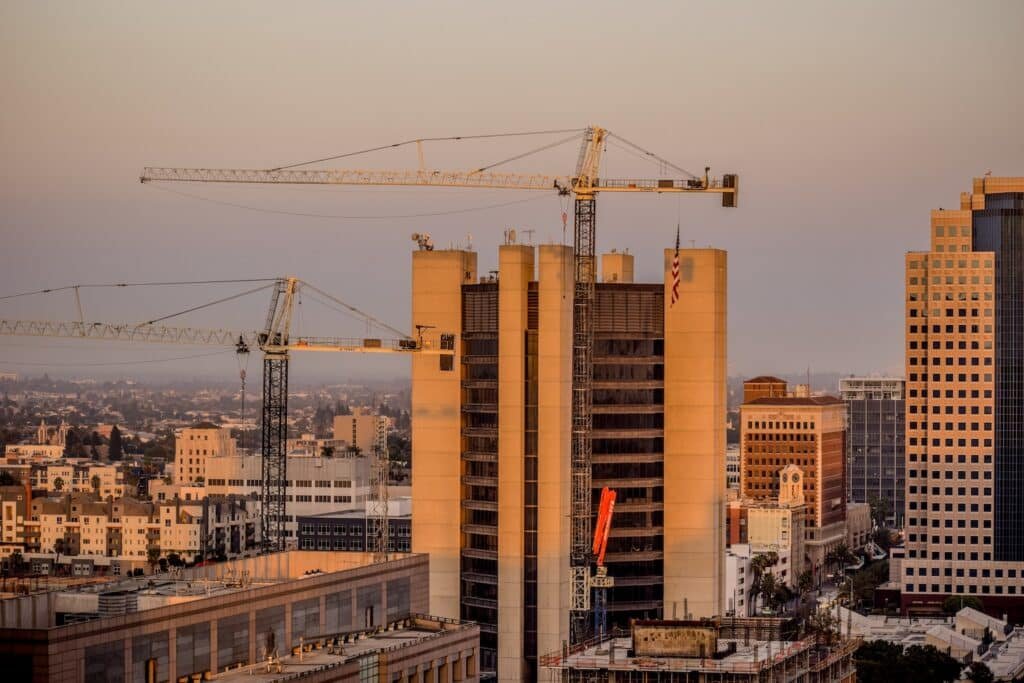
Long Beach’s former City Hall: Repugnance, respect and the road to redevelopment
It was 2012 and the American Institute of Architect’s South Bay division hosted meetings that asked a very simple question: What are the possibilities within Long Beach’s Civic Center?
The question itself automatically hinted at the elephant in the public’s living room: the late-modern-slash-brutalist Civic Center was built in 1978—its centerpiece the 14-story, concrete-meets-tinted glass City Hall structure—and the fact that, well, it was anything but civically welcoming.
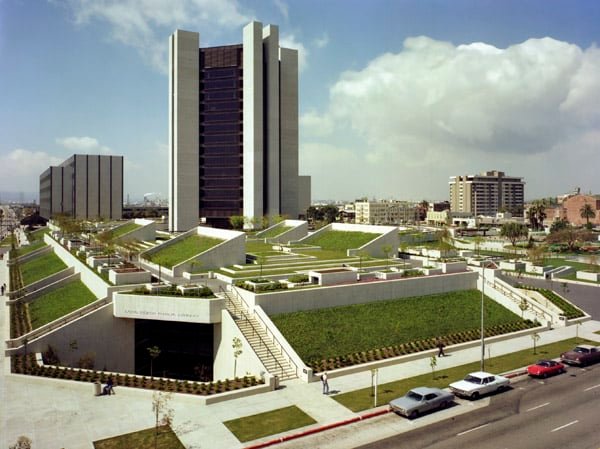
They were talking about the possibilities of a space which is supposed to engage citizens—and in that sense, engagement cannot be enacted through monotonous spaces. I called it “deeply uninviting” at the meeting—something I look back on with a tinge of regret—with a singular monument dedicated to power standing tall, while the low-level gardens–some odd attempt to present a contrast–sit on the rooftops of the encased spaces below (which were flooded and ruined thanks to a lack of irrigation in a rooftop garden design—kid you not).
I (as others in the room shared) was dismissive of Alan Pullman (of Studio One Eleven) and moderator Rick D’Amato’s beautiful praise of Gibb’s architectural monument, noting that it was reflective of some of the world’s finest forms of late modernism and brutalism, from Le Courbusier’s Unité d’Habitation to Louis Kahn’s Salk Institute.
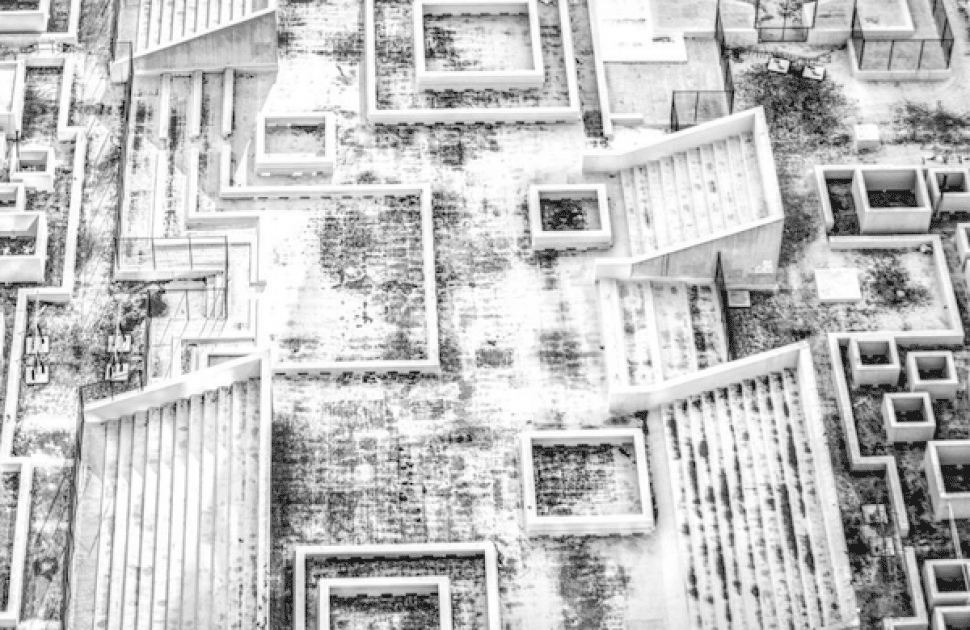
Structural engineer Ken O’Dell made his point succinctly about keeping the integrity of the building when he stated, “In making your case [with regard to what to do with the space], you must emphasize that the value of what is here doesn’t stop with what you see. The value of what you have here is the historical context: you have where it was and you can see where it can go. And structurally speaking, there is no reason why you can’t move forward with something from the past.”
Michael Bohn, another one of Studio One Eleven’s principal architects, presented a strategic study from a 2001 steering committee in another AIA meeting to discuss the Civic Center’s potential saving. The study showed that the city sought ideas that mainly focused on waterproofing, security, and isolation issues: the lack of a slope on the library’s building caused massive leakages with every storm; the tragedy of 2001 brought about questions of inept protection; and the space itself seemed removed entirely from civic activity.

Despite the leaks, the structure of the library itself was still in good condition—and according to Bohn, the building was on the good side of history, not facing entire demolishment. (Oh, the irony.) And this good side of history was a driving point for Bohn’s presentation: the study, infused with open park space and a reorganization of the street grid which would drive people in from more directions, was driven by nostalgic memories of Long Beach’s Civic Center during the 20s, where multiple activities and programs brought people—shocker—actually together to engage.
“There was always a reason to come to the Civic Center,” as Bohn stated.
And with Gibbs himself actually present, the barrage of negativity toward his design feels now unnecessary. After all, it was and remains inducted into UCLA’s list of architectural landmarks: 40 years later, no one would take up O’Dell or Pullman or D’Amato or Bohn on their words of keeping and maintaining the structure.
In 2016, the first of its attached buildings—the mid-century, Killingsworth-designed courthouse—would make way for the current City Hall and Port of Long Beach headquarters following the construction of the Deukmeijan courthouse up the way on Magnolia Avenue.
And come 2022, Gibbs’s misunderstood City Hall structure would join the rest of the Civic Center’s demise.
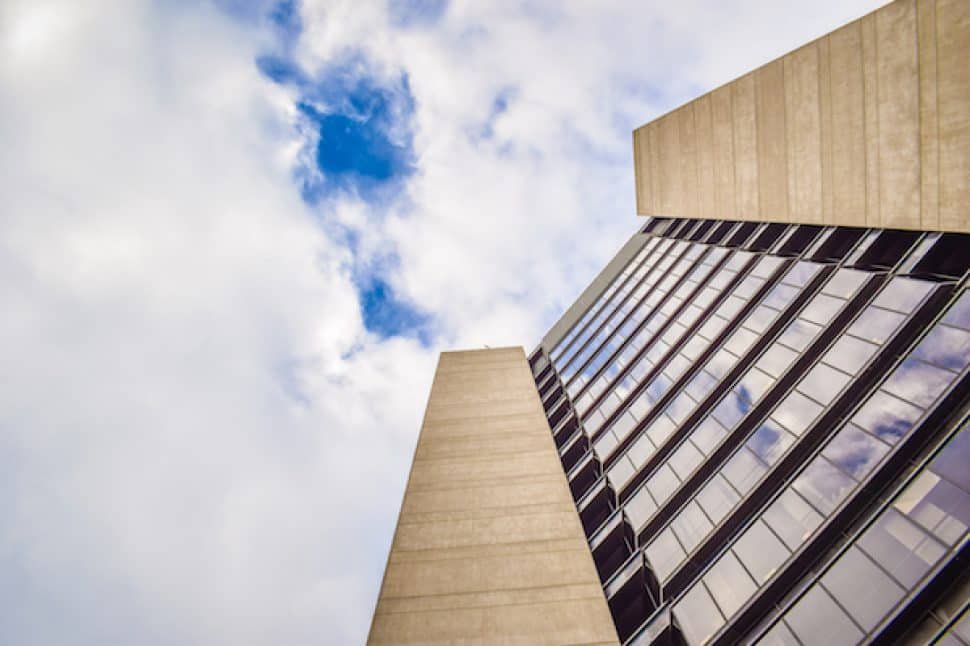
Looking back on a building that no longer exists—a story too often found in Long Beach’s history
The former City Hall would have made for a gorgeous hotel: Stripping the windows of their dark tint, turn the council chambers into an underground pool and you would have had one of the most unique hospitality joints on the West Coast.
It did for most, however, make for a nightmarish civic building.
The space was absolutely desolate minus the handful of men and women having the misfortune of experiencing homelessness, each of whom gathered there despite the removal and fencing off of Lincoln Park that took place in 2018 as construction began on the Civic Center you now see today. Concrete pillars created vicious wind tunnels that made the space—metaphorically and literally—cold. And sunlight—metaphorically and often literally—rarely reached through its crevices.
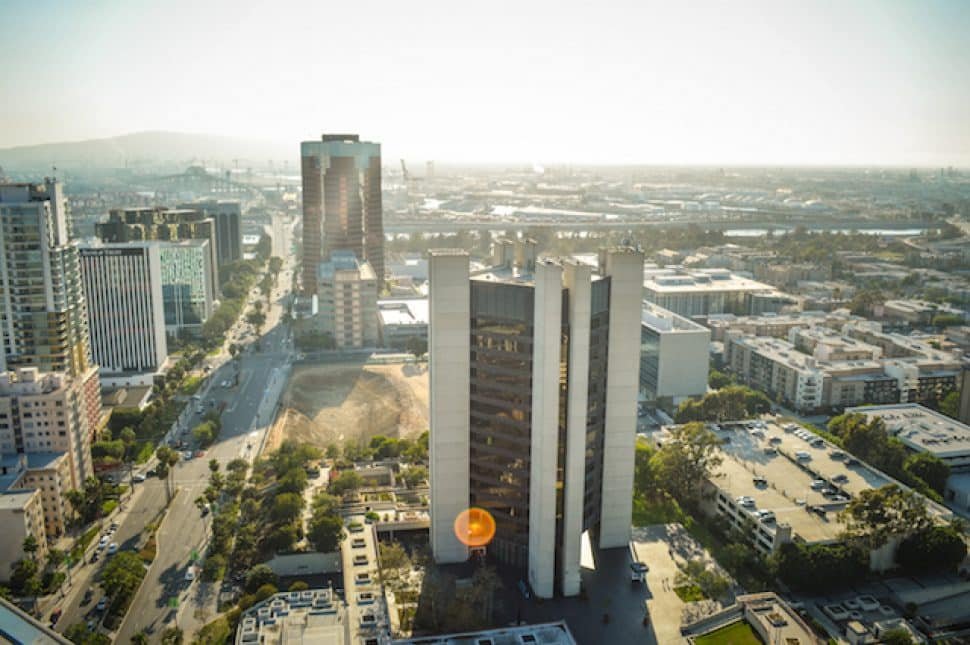
To add salt to the wounds, it wasn’t structurally sound according to an analysis nor was it fit to take on City staff, which had to house their staff overflow at off-site spaces that cost the City millions each year.
This is an important aspect of architecture; not just the purpose of a structure but the feeling. Surely, ego comes into any architectural design; one could argue that Gibbs missed the Civic Feeling mark by creating a phallic, concrete structure dedicated to political power. More importantly, however, where a building is placed and for what purpose combine to create the feeling of a building; the way people respond to it.
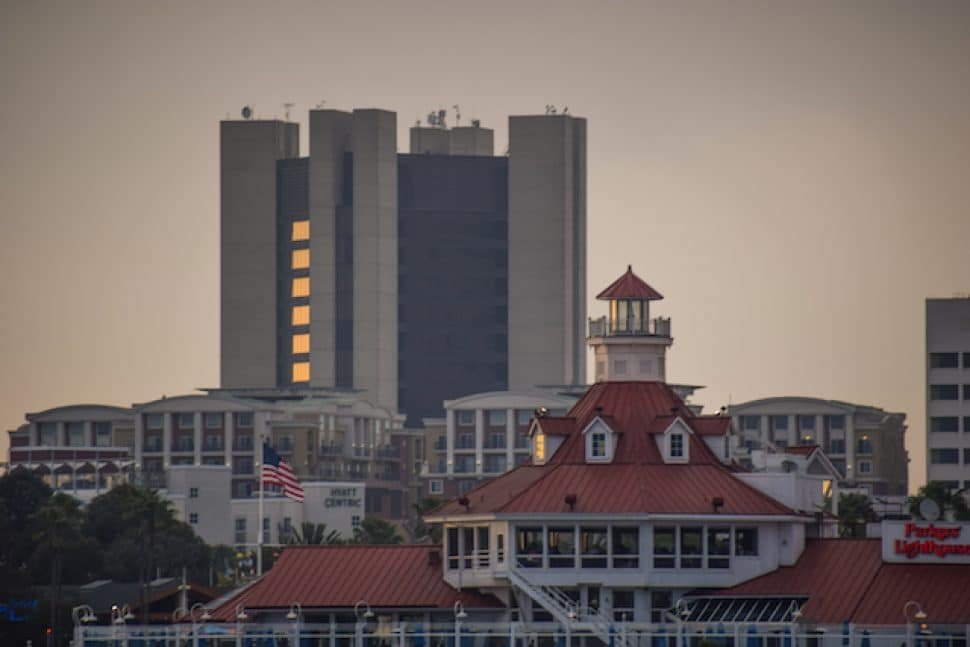
And the blunt reality is that, while I am of the rare opinion that the structure is beautiful, most did not find beauty in it at all and, far more importantly, they didn’t wish to engage with it; they did not wish to engage with a building that is meant to encourage civic participation. That, no matter how you dice it, is a huge problem.
Which is why former Vice Mayor Suja Lowenthal—the woman who largely led the charge to rebuild the civic center in Downtown Long Beach—was so right in calling the civic center “the public’s living room.”
And it was, arguably amongst many highlights, the largest achievement in her 10-year tenure as Councilmember for the 2nd District.
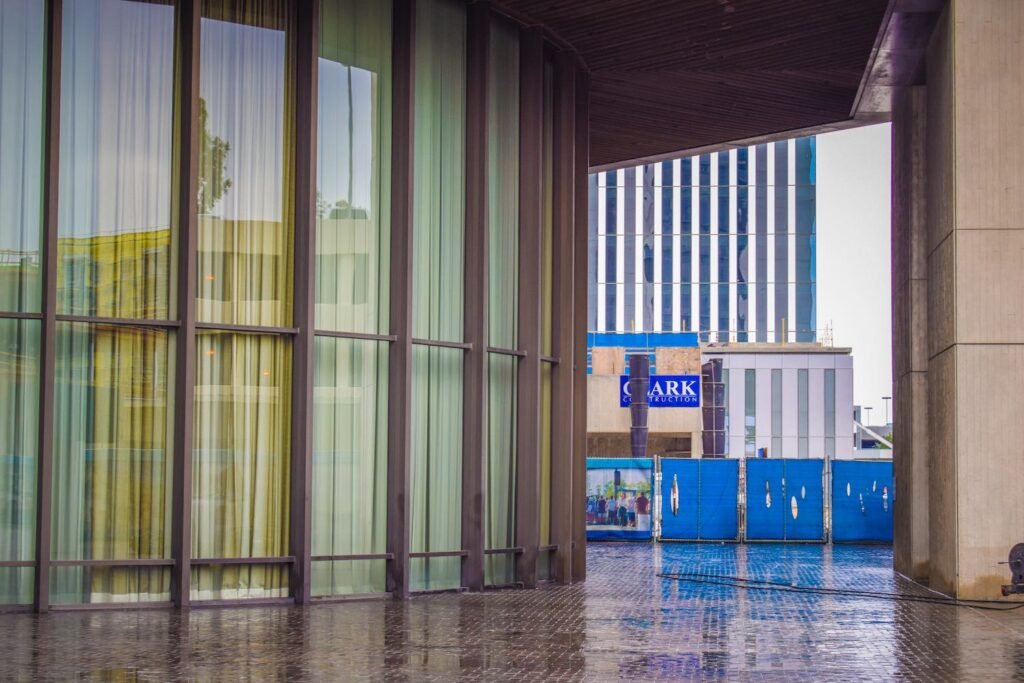
At the beginning of this tenure, Lowenthal faced a debilitating belief that ran rampant on on the 14th Floor of City Hall: “Long Beach just isn’t ready.”
Long Beach isn’t ready for larger businesses to move in. Long Beach isn’t ready for a more progressive port. Long Beach isn’t ready for streets that cater to people over cars. Long Beach isn’t ready to ban plastic bags.
Long Beach isn’t ready.

Lowenthal found this ideology not only inefficient but outright wasteful, leading to City-led projects that lacked sustainability and failed to cater to the residents who depended on them. It resulted in lackluster projects that were destined to be demolished—rather than stellar projects that can stand the test of time—all in the name of placation because “Long Beach wasn’t ready.”
“Sometimes you have to get really angry and irate to find out the things that really move you and what you are destined to do,” Lowenthal said. “Had that not have happened, I would have taken a pass.”
Had she have taken that pass, it would be largely suspect that the city’s largest project in decades—building an entirely new Civic Center—would not have happened.

“It’s the public’s living room,” Lowenthal said in an interview I did with her 2015. “It takes me back to the quad in front of my church and school in India. What I remember about that quad was that it was a theatrical space—that function was provided by the church. Because in a dense space like Madras, you don’t have space like that—so where else are people going to congregate? Rich, not-so-rich, the homeless… They sat together and watched theatre together. That’s what the public living room is.”
Commonality and a sharing of the same experience defines a civic space. And for Lowenthal, these key aspects, paired with indelible memories where she didn’t feel the need to distinguish herself from, say, a child who lived on the street, spoke volumes in her advocacy with altering our own Civic Center.
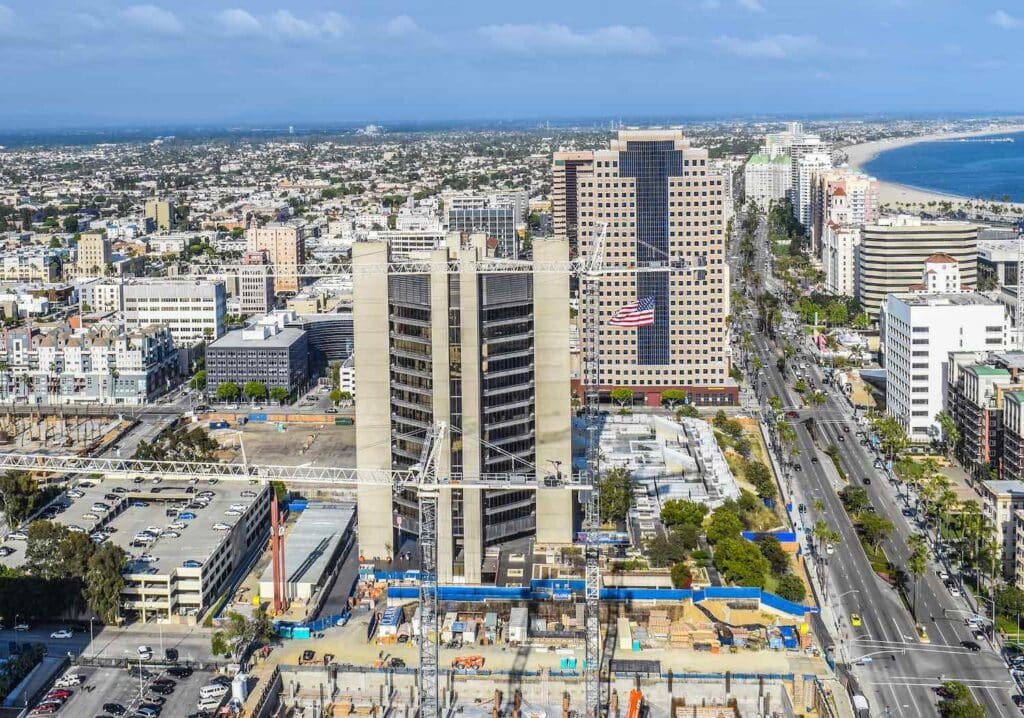
Even more, providing spaces and structures in Long Beach that last—the places like Bixby Park, the Lafayette building, the Walker and Kress buildings…—is a part of our history and culture. In this sense, defenders of the former structure stood tall.
However, planning—particularly within the public sphere—is an emotional experience as much as it is an analytical one. Here’s how Lowenthal put:
“If you sit a planner or an architect down and get them comfortable, all these things don’t come together because they look good on paper,” Lowenthal said. “They come together because someone’s emotions went into it and they thought through it… I am in in no place to make someone’s art unimportant and if I can make sure that happens, I will. The issue with something as important as the Public’s Living Room is that, unfortunately, those who tackled it did so at the wrong time and place… For the better part of the past ten years, I’ve driven in, gone to City Hall, and driven out—the only time I, a councilmember, stays is if we have an event. And that’s weird.”
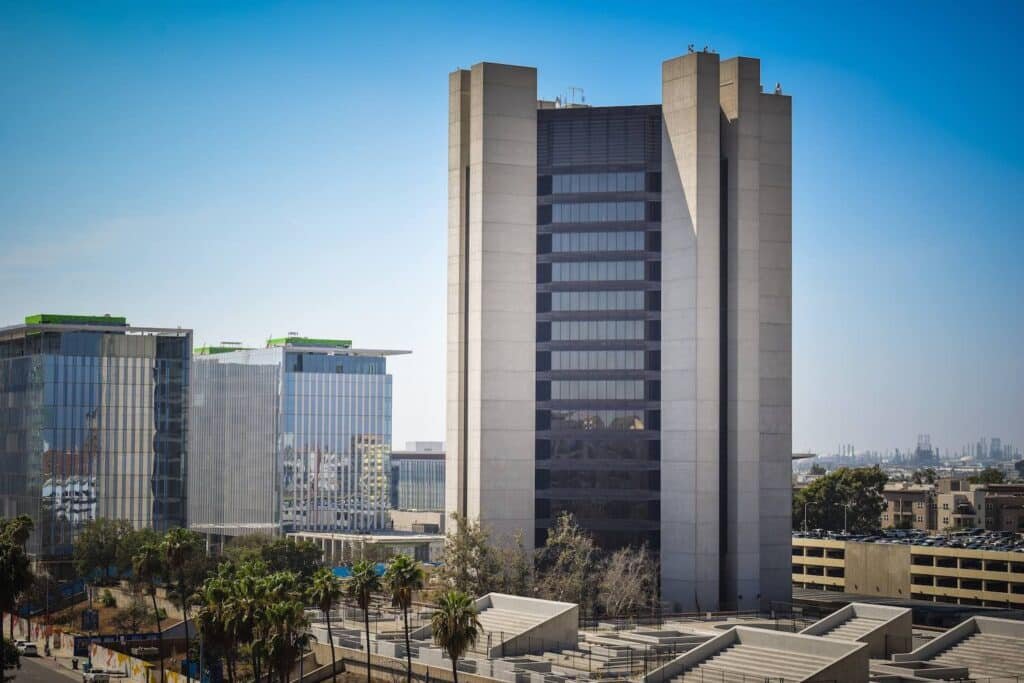
It was weird. It was the precise opposite of a living room for the public. It was a hiding space if anything. And if we are to sit here, expecting our society to be more informed, more engaged, more careful with this tedious thing we call democracy, it certainly wouldn’t happen in a space that encourages the opposite.
That I ultimately understand—but if one looks the building’s beautifully straight lines, clean window orientation, and simplicity, it is quite a building to behold.

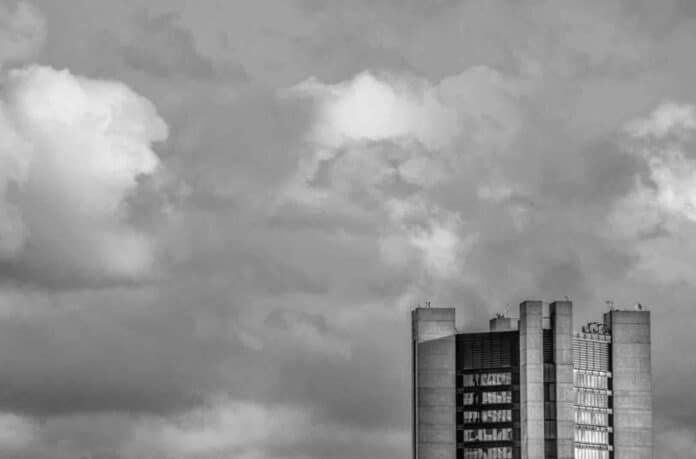

[…] Story continues […]
I worked on the 14th floor for several years and at first I,too, hated the exterior. I came to live it though from the inside which then carried over into an appreciation for the exterior. I lived caning into the civic center and seeing it standing there so strong and linear. Unfortunately, there were enough people who hated the architecture to kick off a conversation about replacing it. The in-depth study needed to really ascertain what was needed to make sure it was structurally sound and fix the leaking issues above the library didn’t really catch on, and a totally new development excited the decision makers. This new development included housing on the site which is now in question. It may ultimately be known as the Long Beach Folly.
I worked a block away from 2000-2023. Sure, the building looks good in pictures. But it was miserable to be around.
I too, was one of the few fans of its simplicity, honesty of material, with a nod to Zen aesthetics, but unfortunately dubbed “Brutalist Design”. Perhaps if it had been the project of a named architect, Tadao Ando, Zaha Hadid, or Le Corbusier, it could have been considered something treasured today–like the Guggenheim Museum, the Sydney Opera House, Fallingwater, or even the Washington monument for that matter.
Thanks to Brian Addison for the history and fond/bittersweet reminiscence for the few of us.
Bob Crouch
I seldom went there during the years I lived in Long Beach. The ground floor was dark and all hard surfaces, upstairs was mind numbingly monotonous and the outside projected “impenetrable fortress – stay away!” The library was an underground bunker that leaked, and the old courthouse was in disrepair mechanically and structurally.
It seemed almost Soviet-ish.
So unless I had to deal with the water or gas department in person (very rare), I stayed away.
I grew up on the west side of Long Beach near the terminal island freeway. As a youth my friends and I road are bicycles through dirt roads and back streets to the naval base, shipyard and old downtown Long Beach. I remember you could see the shore line blocks away from the Ocean Boulevard. The Old City Hall was a inconspicuous downtown and the community thrived with a stable work force, affordable housing, and accessible recreation parks. I moved away from Long Beach in 1974 to attend college out of state. When I returned to Long Beach in 1979 I did not recognize downtown Long Beach, but the new City Hall complex which stood like a concrete fortress and no longer a friendly place to visit.
Great looking building. Shame that it is gone. A unique landmark – particularly when compared to the uninspired glass box on Ocean with which it was replaced. Watch, the whackos who advocated tearing it down will lament the loss in the years to come. As for it not being large enough, why did the local government schmoes not consider cutting staff until they fit the available space? No, that would make too much sense.
Reading about the lost architectural masterpiece in Long Beach is bittersweet. It’s heartbreaking to think that something so unique and significant, with its late modern design, was so disliked by many that it was eventually demolished. It feels like a missed opportunity to preserve history, even if the building wasn’t fully appreciated in its time. Architecture has such a powerful way of shaping our memories and identity, and losing this piece of history feels like letting go of a story we’ll never get back.
I found this article about Long Beach’s former City Hall really thought-provoking. It’s interesting how a building can be seen as both a masterpiece and something that people dislike so much. It makes me think about how our opinions on architecture can change over time. The author’s shift from seeing the building as “cold” to appreciating its unique design really resonates with me. It reminds us that sometimes we don’t recognize the beauty or significance of something until we take a closer look or give it some time.